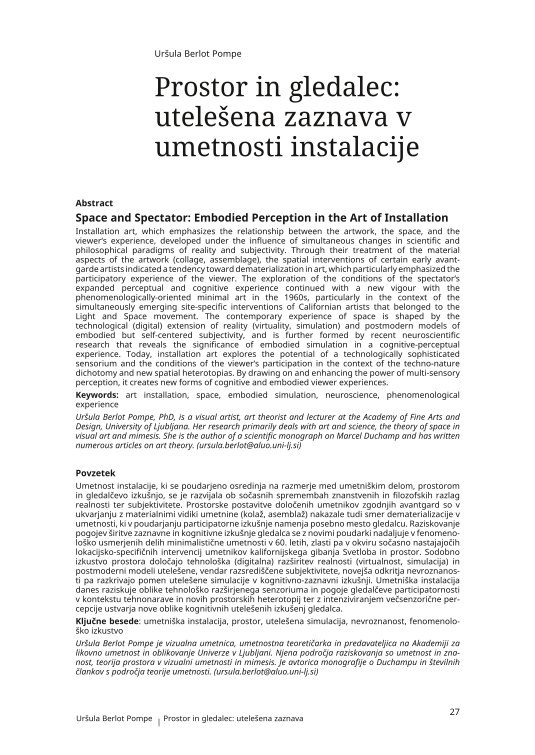Installation art, which emphasizes the relationship between the artwork, the space, and the viewer‘s experience, developed under the influence of simultaneous changes in scientific and philosophical paradigms of reality and subjectivity. Through their treatment of the material aspects of the artwork (collage, assemblage), the spatial interventions of certain early avantgarde artists indicated a tendency toward dematerialization in art, which particularly emphasized the participatory experience of the viewer. The exploration of the conditions of the spectator‘s expanded perceptual and cognitive experience continued with a new vigour with the phenomenologically-oriented minimal art in the 1960s, particularly in the context of the simultaneously emerging site-specific interventions of Californian artists that belonged to the Light and Space movement. The contemporary experience of space is shaped by the technological (digital) extension of reality (virtuality, simulation) and postmodern models of embodied but self-centered subjectivity, and is further formed by recent neuroscientific research that reveals the significance of embodied simulation in a cognitive-perceptual experience. Today, installation art explores the potential of a technologically sophisticated sensorium and the conditions of the viewer‘s participation in the context of the techno-nature dichotomy and new spatial heterotopias. By drawing on and enhancing the power of multi-sensory perception, it creates new forms of cognitive and embodied viewer experiences.




